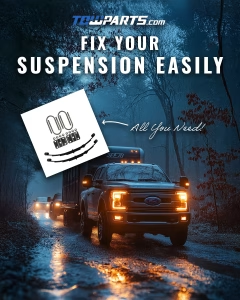
Choosing the Right Trailer Suspension Kit for a Smooth Ride
Your trailer’s suspension system does more than just absorb bumps—it ensures smooth towing, better weight
Purchasing a used trailer can be a cost-effective solution for your hauling needs. However, it’s crucial to conduct a thorough inspection to ensure safety, functionality, and value. Here’s a comprehensive guide to help you make an informed decision.
1. Assessing the Trailer’s Frame and Structure
The frame is the backbone of any trailer, providing structural integrity and support. When inspecting a used trailer, pay close attention to the following:
• Inspect for Rust and Corrosion: Examine the frame, undercarriage, and joints for signs of rust, which can compromise structural integrity. Surface rust may be manageable, but deep corrosion can weaken the trailer and lead to safety hazards.
• Check for Cracks or Weld Issues: Look for any cracks, especially around welds, indicating potential weaknesses. Ensure all welds are intact and show no signs of fatigue or separation.
• Evaluate the Overall Alignment: Ensure the trailer is level and the frame isn’t warped or bent. Misalignment can cause uneven tire wear and handling issues.
2. Examining the Axles and Suspension
The axles and suspension system are crucial for the trailer’s load-bearing capacity and ride quality. Here’s what to check:
• Inspect Axle Condition: Look for signs of wear, damage, or bending. Ensure the axles are appropriate for the trailer’s intended load capacity.
• Assess Suspension Components: Check leaf springs, hangers, and U-bolts for wear or damage. Worn suspension parts can lead to poor handling and increased tire wear.
• Consider Axle Capacity: Ensure the axle capacity matches your intended load requirements. Overloading axles can lead to premature failure and safety risks.
3. Evaluating the Tires and Wheels
Tires and wheels are vital for safe towing. Inspect them carefully:
• Check Tire Tread and Age: Inspect for uneven wear, cracks, or dry rot. Old or damaged tires can lead to blowouts and accidents.
• Verify Wheel Condition: Look for dents, rust, or other damage that could affect performance. Damaged wheels can cause vibrations and handling issues.
• Ensure Proper Tire Rating: Confirm that tires are rated for the trailer’s load capacity. Using underrated tires can be dangerous and lead to failures.
4. Inspecting the Braking System
A functional braking system is essential for safety. Here’s how to evaluate it:
• Test Brake Functionality: Ensure brakes engage smoothly and effectively. Test the brakes at low speed to confirm proper operation.
• Examine Brake Components: Look for worn pads, discs, or drum issues. Worn components can reduce braking efficiency and increase stopping distances.
• Check Brake Wiring: Inspect for frayed wires or poor connections that could impede brake performance. Faulty wiring can lead to brake failure, posing significant safety risks.
5. Reviewing the Electrical System
The electrical system controls lights and signals, crucial for safe towing:
• Test All Lights: Ensure all tail lights, brake lights, and indicators function properly. Non-functioning lights can lead to accidents and legal issues.
• Inspect Wiring Harness: Look for signs of wear, corrosion, or damage. Damaged wiring can cause electrical failures and increase the risk of short circuits.
• Check the Battery (if applicable): If the trailer has a battery, ensure it’s in good condition and holds a charge. A faulty battery can affect the operation of electric brakes and other components.
6. Evaluating the Hitch and Coupler
The hitch and coupler are critical for safe attachment to your towing vehicle:
• Inspect the Coupler for Wear and Damage: Look for cracks, rust, or deformities that could compromise safety. A damaged coupler can lead to trailer detachment during transit.
• Ensure Proper Operation of the Latch Mechanism: The latch should open and close smoothly, securely locking onto the hitch ball. A faulty latch can result in an insecure connection.
• Verify Compatibility with Your Vehicle’s Hitch: Ensure the coupler size matches your hitch ball size (e.g., 2-inch coupler with a 2-inch ball). Mismatched sizes can cause towing instability.
7. Checking the Floor and Decking
The condition of the trailer’s floor is vital for cargo safety:
• Examine for Rot, Rust, or Damage: Check wooden floors for rot and metal floors for rust or corrosion. Compromised flooring can fail under load, leading to accidents.
• Assess the Structural Support Beneath the Decking: Ensure crossmembers and supports are intact and free from damage. Weak supports can cause the floor to sag or collapse.
• Test for Soft Spots or Weak Areas: Walk across the floor to detect any soft spots indicating underlying issues. Addressing these areas promptly can prevent further deterioration.
8. Reviewing the Trailer’s Documentation
Proper documentation ensures legal compliance and verifies ownership:
• Confirm the Title is Clear and Matches the Seller’s Information: Ensure there are no liens or disputes over ownership. A clear title is essential for legal ownership transfer.
• Check for Maintenance Records Indicating Regular Upkeep: Documentation of maintenance can provide insight into the trailer’s condition and how well it has been cared for.
• Verify the Vehicle Identification Number (VIN) Matches the Paperwork: Cross-reference the VIN on the trailer with the documents to ensure they match. Discrepancies can indicate potential legal issues.
9. Assessing Additional Features and Accessories
Additional components can enhance functionality but require inspection:
• Inspect Ramps, Winches, and Other Accessories for Proper Operation: Ensure all accessories function correctly and are in good condition. Faulty accessories can hinder trailer use and pose safety risks.
• Check for Signs of Wear or Damage: Look for rust, frayed cables, or other damage that could affect performance. Addressing these issues can prevent accidents and equipment failure.
• Ensure All Safety Chains and Breakaway Systems are Present and Functional: These safety features are crucial for preventing accidents in case of hitch failure. Verify they meet legal requirements and are functioning properly.
Conclusion
Purchasing a used trailer requires careful consideration and thorough inspection to ensure safety, functionality, and value. By diligently assessing the frame, axles, tires, brakes, electrical systems, and additional features, you can make an informed decision that meets your hauling needs. Remember to verify all documentation and consider the compatibility with your towing vehicle. For quality trailer parts and accessories, TowParts.com offers a wide selection, free nationwide shipping, and genuine Axletek products to support your maintenance and replacement needs.
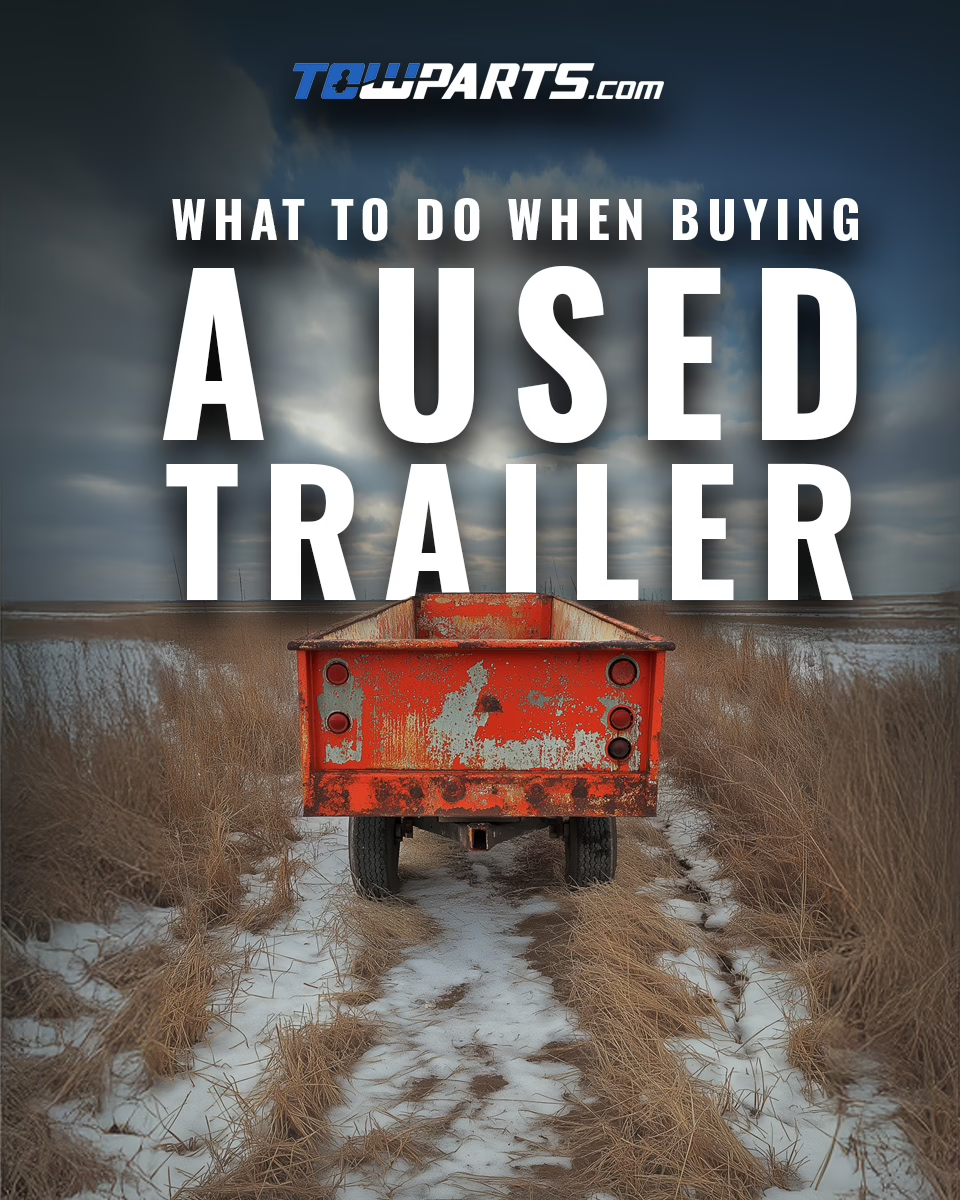

Your trailer’s suspension system does more than just absorb bumps—it ensures smooth towing, better weight
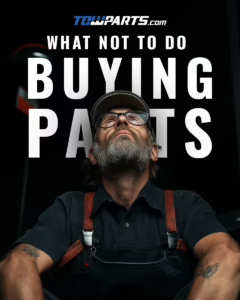
Don’t let simple mistakes compromise your trailer’s safety or performance. By choosing high-quality parts, verifying
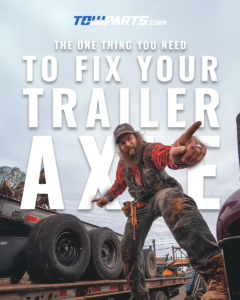
Trailer Axle Service Kits simplify maintenance by providing all the essential components—hubs, bearings, seals, races,
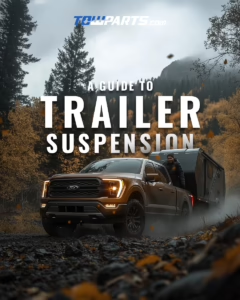
Discover how the right trailer suspension can transform your towing experience. From leaf springs to

One of the first big decisions you’ll face as a trailer hauler is choosing between
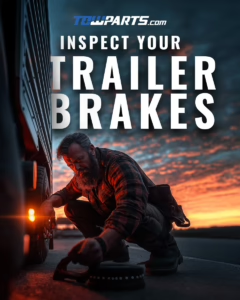
Regular inspections of your trailer brakes don’t just keep you safe—they also save you time,